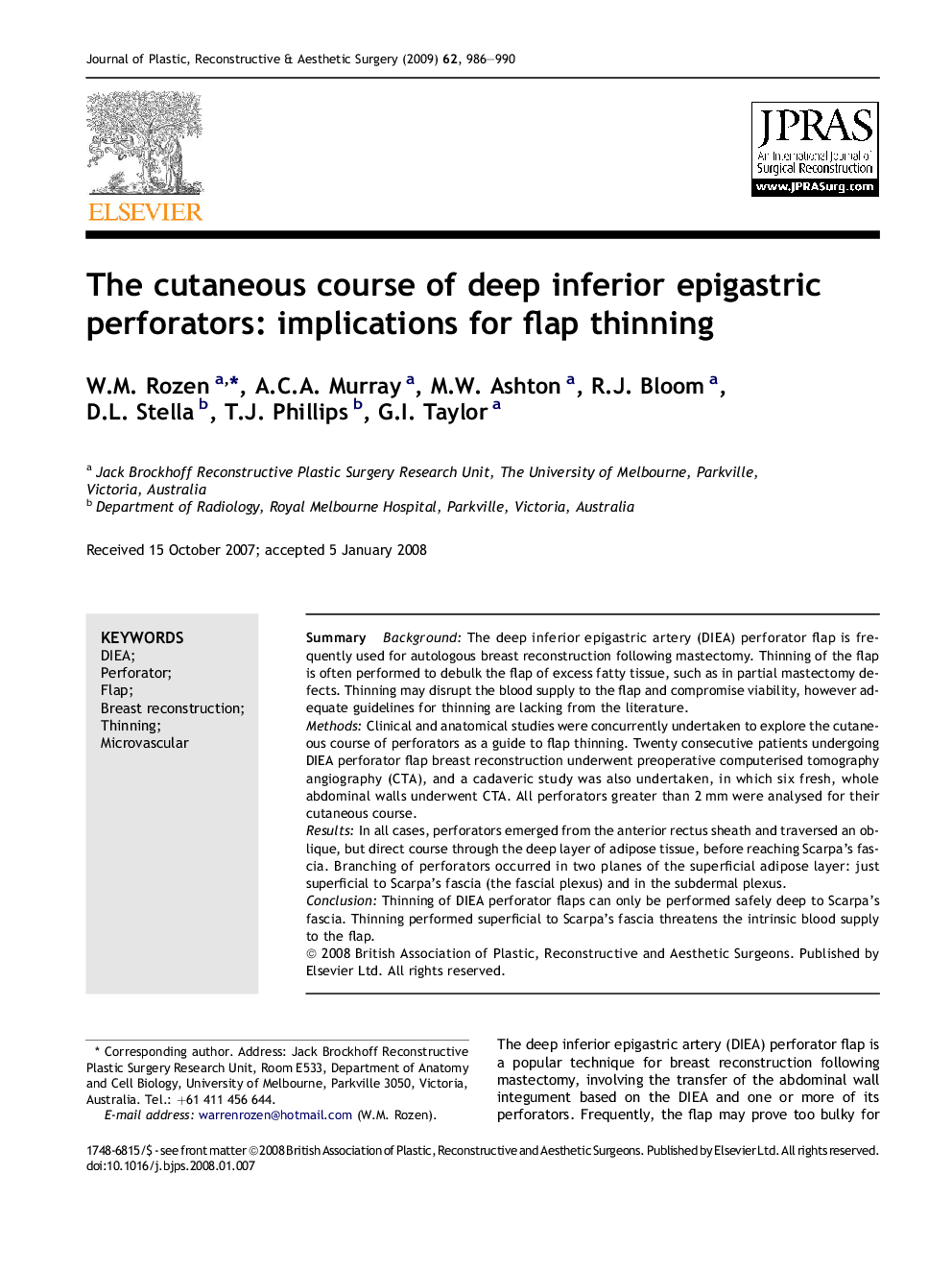| Article ID | Journal | Published Year | Pages | File Type |
|---|---|---|---|---|
| 4121735 | Journal of Plastic, Reconstructive & Aesthetic Surgery | 2009 | 5 Pages |
SummaryBackgroundThe deep inferior epigastric artery (DIEA) perforator flap is frequently used for autologous breast reconstruction following mastectomy. Thinning of the flap is often performed to debulk the flap of excess fatty tissue, such as in partial mastectomy defects. Thinning may disrupt the blood supply to the flap and compromise viability, however adequate guidelines for thinning are lacking from the literature.MethodsClinical and anatomical studies were concurrently undertaken to explore the cutaneous course of perforators as a guide to flap thinning. Twenty consecutive patients undergoing DIEA perforator flap breast reconstruction underwent preoperative computerised tomography angiography (CTA), and a cadaveric study was also undertaken, in which six fresh, whole abdominal walls underwent CTA. All perforators greater than 2 mm were analysed for their cutaneous course.ResultsIn all cases, perforators emerged from the anterior rectus sheath and traversed an oblique, but direct course through the deep layer of adipose tissue, before reaching Scarpa's fascia. Branching of perforators occurred in two planes of the superficial adipose layer: just superficial to Scarpa's fascia (the fascial plexus) and in the subdermal plexus.ConclusionThinning of DIEA perforator flaps can only be performed safely deep to Scarpa's fascia. Thinning performed superficial to Scarpa's fascia threatens the intrinsic blood supply to the flap.
